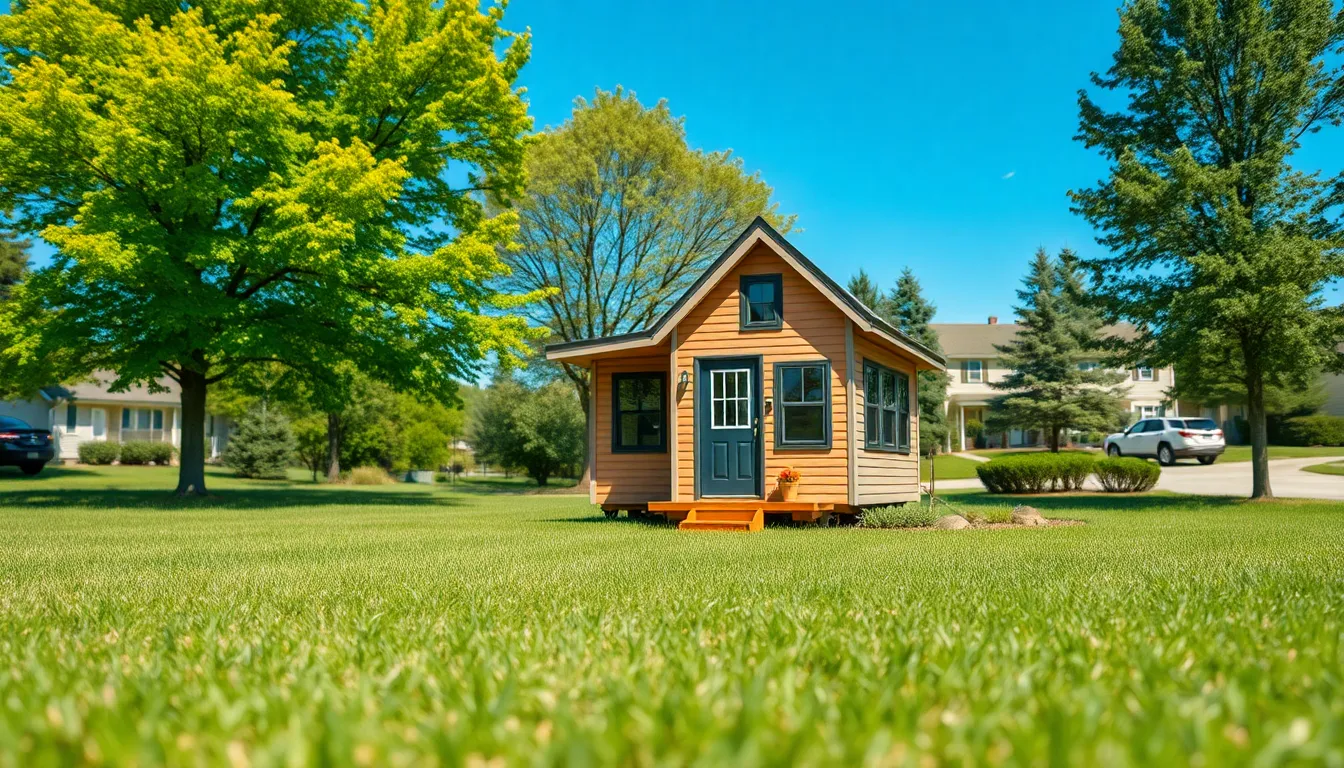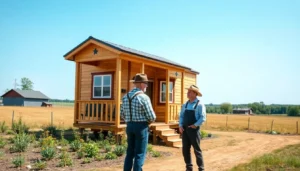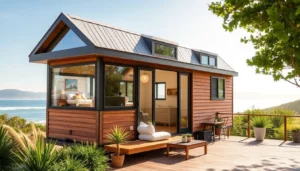Table of Contents
ToggleTiny houses are all the rage these days, and who wouldn’t want to downsize their living space while maximizing their freedom? However, before diving headfirst into the tiny living craze, there’s a tiny detail that can’t be overlooked: permits. Yes, those pesky little pieces of paper that can make or break your dream of a cozy, minimalist haven.
Overview of Tiny House Permits
Tiny house permits vary significantly by location, impacting the feasibility of building or living in a tiny house. Regulations depend on state, county, and city requirements, which dictate how tiny homes conform to zoning laws and building codes. Securing the appropriate permits often involves determining whether the tiny house qualifies as a movable structure or a permanent dwelling.
Local jurisdictions frequently differentiate between temporary and permanent tiny homes. If a tiny house is stationary, it must align with local building codes, which may involve meeting minimum square footage and safety standards. Homeowners typically need to apply for a building permit, which may require architectural plans and inspections.
Additionally, zoning regulations affect where tiny houses can be placed. Some areas allow tiny homes on private property, while others restrict them to designated tiny house communities or RV parks. Using the right zoning type helps ensure compliance with local laws, avoiding potential fines or legal hurdles.
It is crucial for tiny house enthusiasts to conduct thorough research on local regulations before proceeding. Consulting with city planners or local enforcement agencies can provide clarity on specific requirements. Ignoring permit requirements can lead to unexpected challenges, including the inability to live in or rent the tiny house.
Understanding these factors empowers builders and owners to plan effectively. Small differences in local ordinance can significantly influence the tiny house experience, making it essential to approach the permitting process with diligence and care.
Importance of Tiny House Permits
Tiny house permits are essential for ensuring compliance with legal and zoning requirements. Understanding these permits prevents potential issues during the construction and placement of tiny homes.
Legal Compliance
Compliance with local laws safeguards against fines and legal disputes. Obtaining permits confirms that the tiny house meets safety and construction standards. Builders must adhere to inspections that validate their plans. Failure to do so may result in costly penalties and delays. Regulations vary by municipality, meaning thorough research is crucial. Understanding the legal framework helps builders avoid misunderstandings and unexpected obstacles.
Land Use Regulations
Land use regulations determine where a tiny house can legally reside. Zoning laws dictate whether tiny homes can sit on private property or need to be in designated communities. Variations exist across jurisdictions, necessitating careful consideration before embarking on a project. Some areas might allow tiny houses but restrict them to specific land types. Addressing these regulations ensures builders place their homes successfully without future complications.
Types of Tiny House Permits
Tiny house permits fall into distinct categories based on the intended use of the structure and its location. Understanding these types facilitates compliance with local regulations.
Residential Permits
Residential permits typically apply when a tiny house serves as a permanent dwelling. Obtaining this type of permit requires adherence to local zoning laws and building codes. Many municipalities expect builders to submit detailed architectural plans that outline the design, layout, and materials used. Inspections may occur at various stages of construction, ensuring compliance with safety standards. Requirements vary widely, so verifying specific criteria with local authorities remains crucial.
Temporary Permits
Temporary permits are suited for tiny houses intended for short-term occupancy. These permits often allow placement in designated communities or RV parks for limited durations. Application processes can differ based on local policies and may involve fewer requirements compared to residential permits. Compliance with established health and safety regulations is still necessary, and extensions for temporary permits may depend on local discretion. Confirming current regulations in the desired area enhances the chances of successful placement.
Process for Obtaining Tiny House Permits
The process for obtaining tiny house permits involves multiple steps. Understanding local regulations forms the foundation of this journey.
Researching Local Regulations
Each jurisdiction imposes unique requirements for tiny house permits. Builders must review zoning laws, construction codes, and land use restrictions to navigate the system effectively. Local building departments and planning offices provide essential information. Information sharing platforms often detail specific policies and regulations in a given area. Websites and local government resources serve as helpful tools in this research phase. Clarity on whether tiny homes are classified as movable structures or permanent dwellings impacts the type of permit required. Discussing insights with local officials or tiny house communities enhances understanding of compliance measures.
Application Steps
After thorough research, initiating the permit application process is vital. Completing an application form tailored to building or zoning needs serves as the starting point. Providing necessary documentation, including architectural plans, site plans, and engineering details, supports the application. Local authorities often require details on utilities and waste management as part of the submission. After submission, the review process can vary in duration based on location. Often, applicants receive inspection requests to ensure compliance with safety standards. Building regulations require ongoing communication with officials throughout this stage. Successful navigation of these steps leads closer to achieving the goal of tiny house ownership.
Challenges in the Permit Process
Navigating the permit process for tiny houses presents various obstacles. Numerous challenges arise primarily from zoning issues and building codes.
Zoning Issues
Zoning regulations often dictate where tiny houses can be located. Many municipalities impose strict guidelines that limit placement options, creating confusion for owners. Some areas allow tiny homes on private property, while others restrict them to designated communities or RV parks. Compliance with zoning laws is crucial, as violations can lead to penalties or eviction. Residents should verify local zoning ordinances to ensure adherence. Periodically checking community plans helps identify any emerging restrictions or opportunities.
Building Codes
Building codes establish safety and construction standards for tiny homes. Various jurisdictions enforce different codes, creating complexity during the permitting process. Architectural plans and inspections often become necessary to meet these codes. Homeowners must familiarize themselves with local requirements to avoid complications. Failure to comply can result in costly delays or rework. Engaging with local building departments early in the process enhances understanding of expectations. Following these guidelines aids in successfully obtaining the required permits and ensuring safety.
Conclusion
Navigating the world of tiny house permits can be complex but understanding the regulations is essential for a successful tiny living experience. By thoroughly researching local laws and engaging with authorities, builders can ensure compliance and avoid potential pitfalls.
The journey toward tiny house ownership requires diligence but is ultimately rewarding. With the right permits in place, homeowners can enjoy the freedom and flexibility that tiny living offers, all while staying within legal boundaries. Investing time in the permitting process not only safeguards against future complications but also paves the way for a fulfilling tiny home lifestyle.








